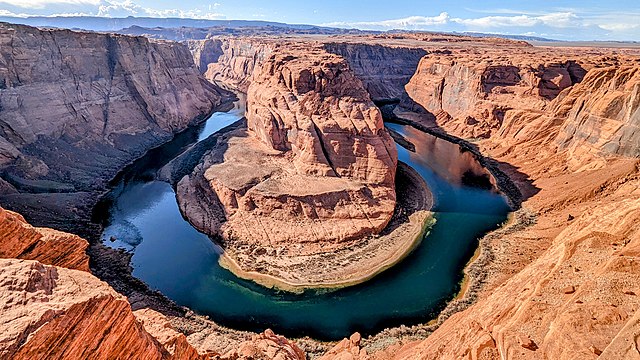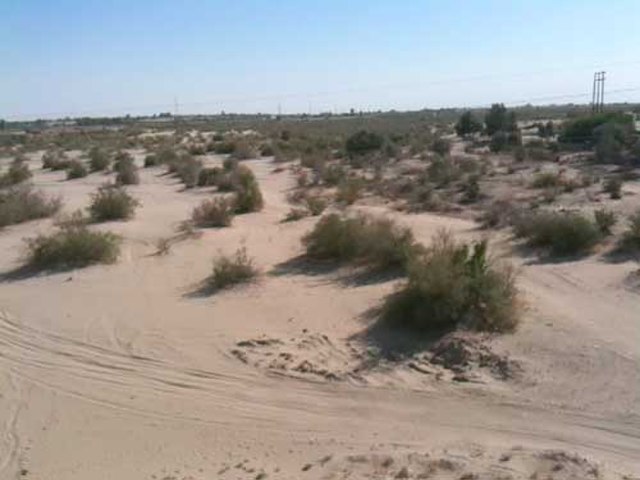Glen Canyon Dam is a concrete arch-gravity dam in the southwestern United States, located on the Colorado River in northern Arizona, near the city of Page. The 710-foot-high (220 m) dam was built by the Bureau of Reclamation (USBR) from 1956 to 1966 and forms Lake Powell, one of the largest man-made reservoirs in the U.S. with a capacity of more than 25 million acre-feet (31 km3). The dam is named for Glen Canyon, a series of deep sandstone gorges now flooded by the reservoir; Lake Powell is named for John Wesley Powell, who in 1869 led the first expedition to traverse the Colorado River's Grand Canyon by boat.
Glen Canyon Dam and Bridge, looking upstream
A boater on the river in Glen Canyon before damming, circa 1898.
Near Music Temple in Glen Canyon during the 1870s
Glen Canyon damsite from the air in November 1957, prior to construction of the Glen Canyon Bridge
The Colorado River is one of the principal rivers in the Southwestern United States and in northern Mexico. The 1,450-mile-long (2,330 km) river, the 5th longest in the United States, drains an expansive, arid watershed that encompasses parts of seven U.S. states and two Mexican states. The name Colorado derives from the Spanish language for "colored reddish" due to its heavy silt load. Starting in the central Rocky Mountains of Colorado, it flows generally southwest across the Colorado Plateau and through the Grand Canyon before reaching Lake Mead on the Arizona–Nevada border, where it turns south toward the international border. After entering Mexico, the Colorado approaches the mostly dry Colorado River Delta at the tip of the Gulf of California between Baja California and Sonora.
The Colorado River at Horseshoe Bend, Arizona, a few miles below Glen Canyon Dam
Headwaters of the Colorado River in Rocky Mountain National Park, Colorado
Colorado River in the Grand Canyon seen from Pima Point, near Hermit's Rest
Colorado River as it exits the United States into Mexico beneath the San Luis Colorado-Colonia Miguel Aléman Bridge (September 2009)








